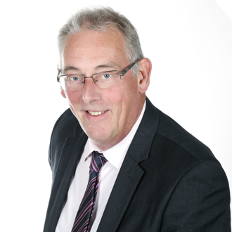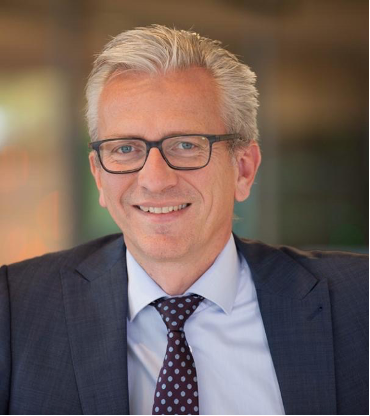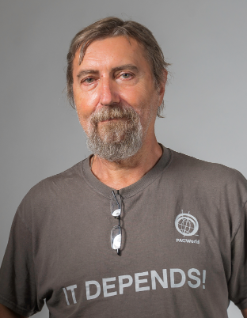Keynotes at ISGT Europe 2020
The keynote speakers at IEEE PES Innovative Smart Grid Technologies Europe 2020 are Ad van Wijk, Leo Dijkstra and Alex Apostolov. They kickoff the program each day from 9:00 to 10:00 CET. More information about their topics of discussion and the speakers themselves can be found on this page.
The conference starts on Monday 26 October at 8:45 a.m. CET with an opening session.
The conference will be opened by prof. Aukje Hassoldt, the Dean of the Faculty of Technolgy, Policy and Management, TU Delft; Prof. Jovica Milanovic, the University of Manchester and the Conference Chairs: prof. Zofia Lukszo and prof. Peter Palensky.
The closing session of the conference will be on Wednesday 28 October at 19:45 including the announcement of next year’s conference.
Title: Smart Electricity and Hydrogen symbiosis for a Sustainable energy system
Speaker: Ad van Wijk, Special advisor to Hydrogen Europe, EU Commision
Time and location: Monday, October 26, 2020, 9:00 – 10:00 CET, Online live stream 1 (MoKK)

Abstract
A global sustainable energy system can be realised with predominantly solar and wind as energy source, converted into electricity via solar panels and wind turbines. Where possible, useful and cost effective, the electricity produced is directly used. However, lowest cost solar and wind electricity can be produced far away from the demand, requiring conversion to hydrogen by electrolysis for cheap transport and storage. The lower electricity production cost and cheaper transport and storage cost will compensate for extra energy conversion losses and costs. The hydrogen can be transported in large quantities worldwide by ship or by pipelines and stored in the underground in salt caverns. Volumes and capacities for hydrogen transport and storage are orders of magnitude larger than for electricity. Today, the conversion process to convert hydrogen in heat, electricity or mechanical power is via combustion. However, in future electrochemical conversion via fuel cells will become more important. Fuel cells for mobility, in buildings for power and heat, and for electricity balancing. In the end electrochemical conversion using electrolysers and fuel cells together with heat pump technology will fully replace combustion technologies. A smart integration of electricity and hydrogen systems using electrochemical conversion and heat pump technology can deliver energy demand in all sectors, clean, reliable and affordable. Electricity and hydrogen will be the carbon-free symbiotic energy carriers and smart grids needs to integrate both.
Biography
Ad van Wijk is part-time Professor Future Energy Systems at TU Delft, the Netherlands. He is guest professor at KWR Water Research Institute to develop and implement the research program Energy and Water. He is special advisor to Hydrogen Europe to develop European hydrogen policies with the EU commission. He holds several advisory and supervisory board positions. Van Wijk has studied physics and did his Ph-D on Wind Energy and Electricity Production at Utrecht University in the Netherlands. He worked as a Researcher and Associate Professor, between 1983 and 1997 in the Department of Science, Technology and Society at Utrecht University. In 1984, van Wijk founded the company Ecofys, which eventually grew into Econcern. Econcern developed many new sustainable energy products, services and projects. Examples include the offshore wind farm Princess, several multi-MW solar farms, a solar cell manufacturing plant and a bio-methanol plant in the Netherlands. Since 2011 van Wijk is appointed as professor Future Energy Systems at TU Delft. He does research on hydrogen energy systems and fuel cell cars and has realized ‘’the Green Village’’ at the TU Delft campus. Van Wijk achieved many important prizes for excellent entrepreneurship. Amongst others he was Dutch entrepreneur of the year in 2007 and Dutch top-executive in 2008. In 2018 van Wijk was honored by KWR, by appointing him Honorary Fellow. Van Wijk has published many books, scientific articles and reports. Amongst others ‘How to boil an egg’, ‘Our Car as Power Plant’, and ‘Hydrogen, the bridge between Africa and Europe’.
Title: The Cognitive Grid Enterprise – How to achieve to a smarter grid operation by augmenting humans with AI and machine learning
Speaker: Leo Dijkstra, Comms Leader IBM Services Benelux
Time and location: Tuesday, October 27, 2020, 9:00-10:00 CET, Online live stream 1 (TuKK)

Abstract
The term smart grid has been around for well over a decade, yet AI and machine learning are now enabling humans to make smarter decisions in managing the power grid. Augmenting humans with digital enhanced cognitive functions such as sight, touch and hearing, all workflows are being re-imagined to increase grid capacity, worker safety and customer experience: How can a machine learning ‘grid model’ help TSO-operators spot the risks and grid operating limits? How can vegetation growth models, satellite images and accurate weather prediction send crews out to the right place and time to cut tree branches before interfering with power lines? And how can visual recognition, augmented reality and speech recognition help field workers do their jobs safely, efficiently and with a higher job satisfaction? These elements come together in what IBM calls ‘The Cognitive Enterprise’, or in this case ‘The Cognitive Grid Enterprise’.
Biography
Leo Dijkstra has a 20 year background in transforming E&U markets: from the opening of commercial flexible power markets for TSO’s in 2001, through unbundling of the sector and the introduction of national DSO/TSO data hubs to facilitate free choice of supplier for business and residential customers, to the definition of market models and standards for the emerging market of electric vehicle charging (e.g. OCPP and interoperability standards). Leo currently leads IBM’s Benelux Energy, Environment & Utilities business and works on integrating DER’s in all aspects of the energy system with a number of clients.
Title: Digitizing the electric power grid – the future is now
Speaker: Alex Apostolov, Principal Engineer OMICRON electronics
Time and location: Wednesday, October 28, 2020, 9:00-10:00 CET, Online live stream 1 (WeKK)

Abstract
The electric power utilities are transitioning towards a Smart Grid as a result of the changes in the industry driven by the developments of computer and communication technologies, as well as the increasing penetration of renewable distributed energy resources. The presentation describes the characteristics of the smart grid and the need for digitization in order to meet the requirements of the different applications. It briefly introduces the key components of the IEC 61850 standard and the extensions that are developed to cover the requirements of different domains outside of the substation. It describes the non-conventional sensors that are becoming key components of the digital substations and looks at different architectures, such as distributed, centralized or hybrid systems. Engineering of the digital substations based on the IEC 61850 SCL (system configuration language) is later described. The benefits of the digital grid and its impact on the maintenance and testing of the electric power system are described at the end of the presentation.
Biography
Alexander Apostolov received MS degree in Electrical Engineering, MS in Applied Mathematics and Ph.D. from the Technical University in Sofia, Bulgaria. He has 45 years’ experience in power systems protection, automation, control and communications. He is presently Principal Engineer for OMICRON electronics in Los Angeles, CA. He is IEEE Fellow and Member of the IEEE PES Power Systems Relaying and Control (PSRC) Committee and the Power System Communications and Cybersecurity (PSCC) Committee. He is past Chairman of the Relay Communications Subcommittee and serves on many IEEE PES Working groups. He is member of IEC TC57 working groups 10, 17, 18 and 19. He is Convenor of CIGRE WG B5.69 ”Experience gained and Recommendations for Implementation of Process Bus in Protection, Automation and Control Systems (PACS)” and member of several other CIGRE B5 working groups. He is Distinguished Member of CIGR and IEEE Distinguished Lecturer. He holds four patents and has authored and presented more than 500 technical papers. He is Editor-in-Chief of PAC World.

